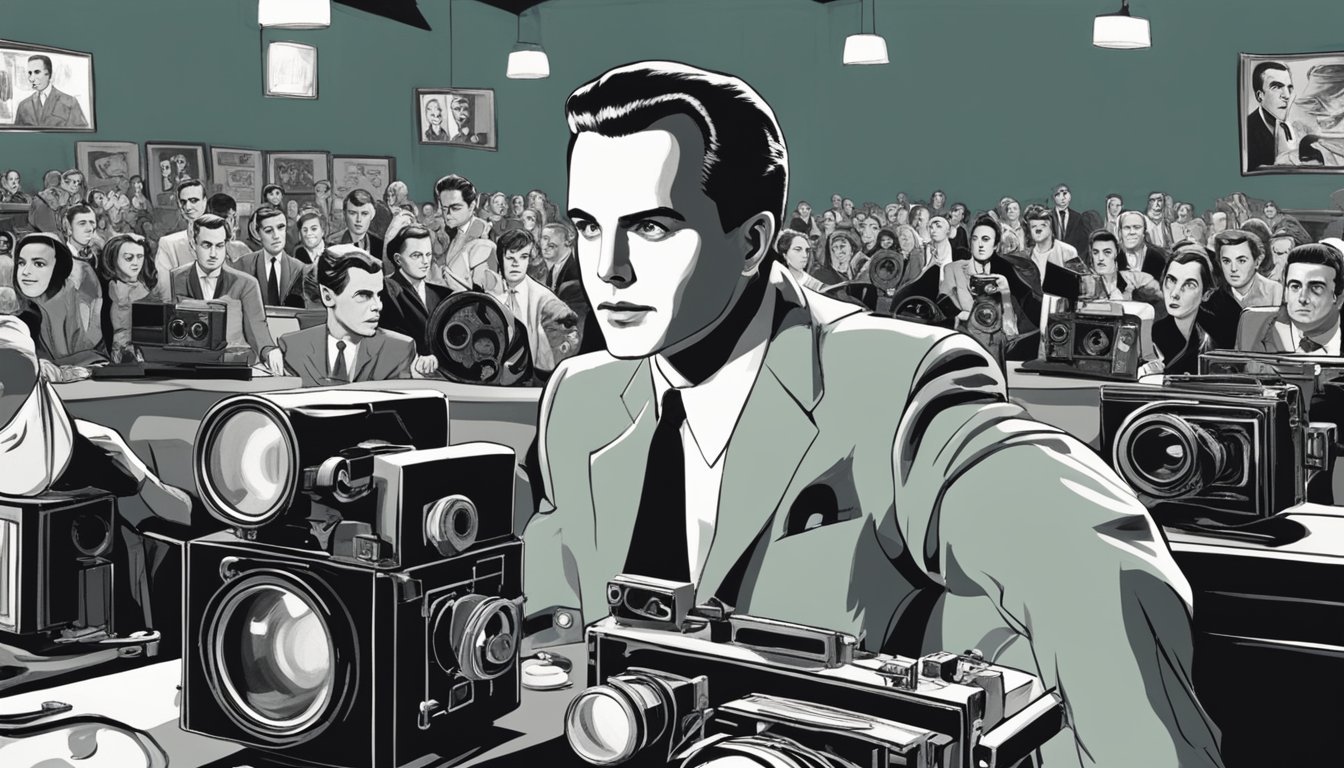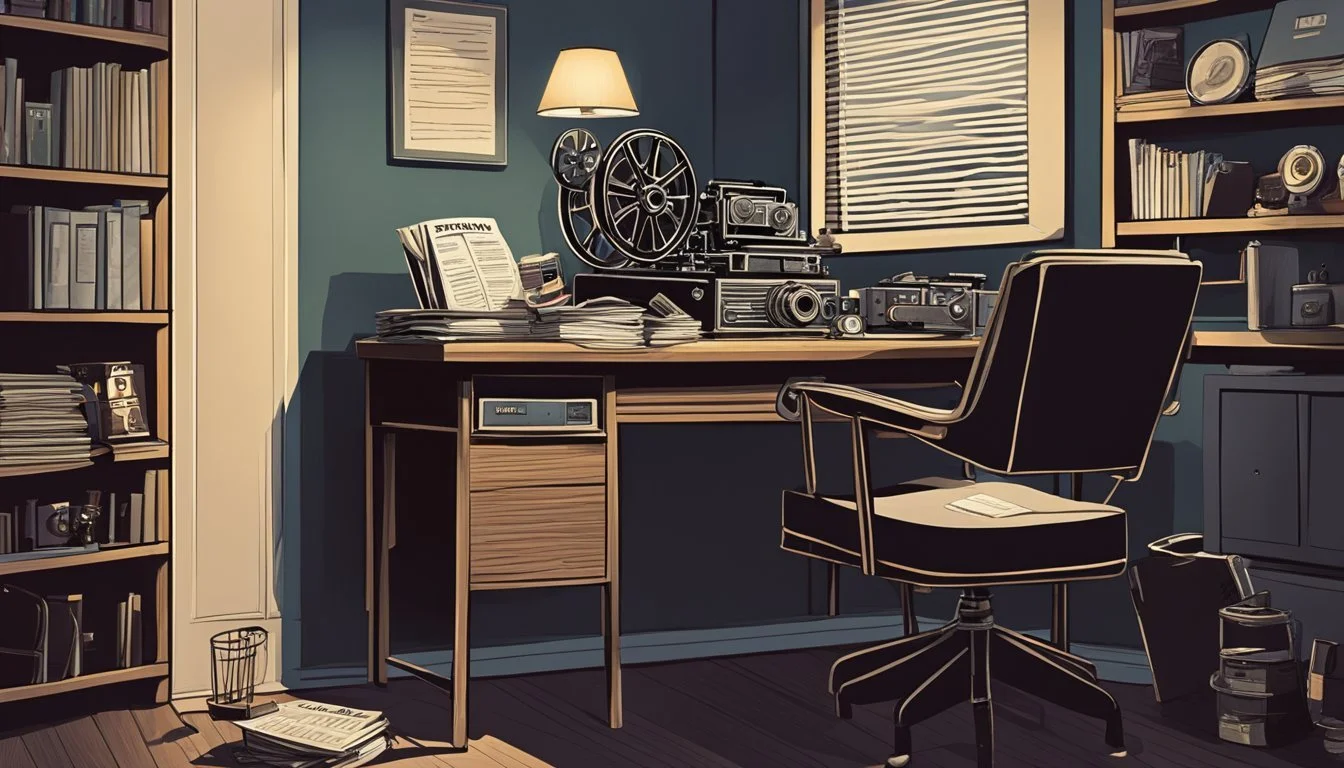The Real Ed Wood: Hollywood's 'Worst' Director Unmasked
A Cult Icon's True Legacy
Ed Wood, a name synonymous with B-movie filmmaking, has become a cult figure in Hollywood history. Despite being labeled "The Worst Director of All Time" by critics Michael and Harry Medved in their 1980 book "The Golden Turkey Awards," Wood's legacy endures. His unique brand of low-budget, high-camp science fiction and horror films continues to captivate audiences decades after their release.
Wood's most infamous creation, "Plan 9 from Outer Space," gained newfound popularity in the 1980s through television revivals. This resurgence brought the long-forgotten director back into the public eye, cementing his status as a household name. While his technical skills may have been lacking, Wood's unbridled enthusiasm for cinema and complete lack of self-awareness have endeared him to generations of film enthusiasts.
The label of "worst director" has paradoxically elevated Wood's status in Hollywood lore. His films, characterized by their low production values and often nonsensical plots, have become beloved artifacts of a bygone era in filmmaking. Wood's story serves as a testament to the enduring power of passion and perseverance in the face of critical derision.
Early Life and Career
Edward Davis Wood Jr. was born on October 10, 1924, in Poughkeepsie, New York. He developed a passion for filmmaking at a young age and would go on to become one of Hollywood's most infamous directors.
Beginnings in Filmmaking
Wood's film career began after serving in the U.S. Marine Corps during World War II. He moved to Hollywood in the late 1940s with dreams of making movies. His first directorial effort was "Glen or Glenda" (1953), a semi-autobiographical film exploring transvestism. The movie was poorly received but showcased Wood's unique style.
Despite limited resources, Wood continued making low-budget films throughout the 1950s. He wrote, directed, and produced movies like "Jail Bait" (1954) and "Bride of the Monster" (1955). These films were characterized by their campy style, unconventional narratives, and often amateurish production values.
Collaborations with Bela Lugosi
One of Wood's most notable professional relationships was with aging horror icon Bela Lugosi. Their collaboration began with "Glen or Glenda" and continued through several projects. Lugosi starred in "Bride of the Monster" and appeared briefly in "Plan 9 from Outer Space" (1959), which was completed after Lugosi's death.
Wood's friendship with Lugosi provided his films with star power, albeit faded. He often incorporated existing footage of Lugosi into his movies, even after the actor's passing. This creative - if questionable - use of footage became one of Wood's trademark techniques.
Their partnership, while brief, left an indelible mark on both men's careers and on cult film history.
Notable Works
Ed Wood directed several low-budget films that gained notoriety for their unconventional style and poor production quality. His most famous works include an alien invasion movie, a semi-autobiographical exploration of cross-dressing, and a monster flick starring Bela Lugosi.
Plan 9 from Outer Space
Plan 9 from Outer Space is widely regarded as Ed Wood's most infamous film. Released in 1959, this sci-fi B-movie tells the story of aliens resurrecting Earth's dead to prevent humans from creating a doomsday weapon. The film is known for its nonsensical plot, wooden acting, and cheap special effects.
Notable elements include flying saucers clearly suspended by strings and day-night continuity errors within single scenes. Despite its flaws, Plan 9 has achieved cult status and is often celebrated for its earnest, if misguided, ambition.
Glen or Glenda
Glen or Glenda, released in 1953, was Ed Wood's directorial debut. This docudrama explores themes of transvestism and gender identity, drawing from Wood's personal experiences as a cross-dresser. The film stars Wood himself (under the pseudonym Daniel Davis) as the titular Glen/Glenda.
Bela Lugosi appears in a nonsensical narrator role, delivering cryptic monologues. Glen or Glenda features dream sequences, stock footage, and disjointed storytelling. While critically panned upon release, it has since been recognized for its groundbreaking portrayal of LGBTQ+ themes in 1950s cinema.
Bride of the Monster
Bride of the Monster, a 1955 sci-fi horror film, marks Ed Wood's second collaboration with Bela Lugosi. The aging Dracula star plays Dr. Eric Vornoff, a mad scientist creating an army of atomic supermen. The film features Wood's trademark low-budget aesthetics, including a famously unconvincing rubber octopus.
Despite its shortcomings, Bride of the Monster showcases Lugosi's final speaking role in a feature film. The movie's production struggles, including Lugosi's drug addiction and lack of funding, exemplify the challenges Wood faced throughout his career.
Distinctive Filmmaking Style
Ed Wood's unique approach to cinema combined low-budget production methods, unconventional themes, and an unabashed enthusiasm that captivated audiences. His films became renowned for their distinctive qualities that set them apart from mainstream Hollywood productions.
Low-Budget Production
Wood's films were notorious for their shoestring budgets and improvised production techniques. He often used cheap sets, stock footage, and unconventional props to create his cinematic visions. In "Plan 9 from Outer Space," flying saucers were crafted from paper plates and hubcaps. Wood's resourcefulness extended to recycling footage across multiple films.
His crew frequently doubled as actors to save money. Wood himself took on multiple roles behind the scenes, including writing, directing, and producing. This hands-on approach resulted in a raw, unpolished aesthetic that became a hallmark of his work.
Cross-Dressing Themes
A recurring element in Wood's films was the exploration of cross-dressing and gender identity. This theme stemmed from his personal experiences and interests. "Glen or Glenda" (1953) tackled the subject directly, with Wood starring as the titular character struggling with their gender identity.
Wood incorporated cross-dressing elements into his other films as well. He often cast Bunny Breckinridge, an openly gay actor, in roles that played with gender norms. This focus on LGBTQ+ themes was groundbreaking for its time, especially in the conservative 1950s film industry.
Cult Classic Appeal
Despite critical disdain, Wood's films developed a devoted following. Their unintentional humor, sincere passion, and offbeat charm resonated with audiences seeking alternative cinema experiences. "Plan 9 from Outer Space" became a quintessential "so bad it's good" movie, celebrated for its earnest attempt at sci-fi on a limited budget.
Wood's unique vision and determination in the face of adversity endeared him to fans. His films' technical flaws, such as visible boom mics and obvious continuity errors, became part of their charm. This cult appeal led to midnight screenings, fan conventions, and a renewed appreciation for Wood's contributions to B-movie culture.
Cultural Impact and Legacy
Ed Wood's films gained notoriety for their low quality, yet they left an indelible mark on popular culture. His unconventional approach and dedication to filmmaking inspired future generations of creators.
Posthumous Recognition
Ed Wood's work experienced a resurgence in popularity decades after his death. In 1980, he was dubbed "The Worst Director of All Time" in The Golden Turkey Awards, ironically cementing his place in film history. This recognition sparked renewed interest in Wood's films among cinephiles and cult movie enthusiasts.
Wood's movies, particularly "Plan 9 from Outer Space," became celebrated for their unintentional humor and charming ineptitude. Film festivals and midnight screenings dedicated to his work began popping up across the country.
Influence on Future Generations
Wood's DIY ethos and passion for filmmaking inspired countless aspiring directors. His ability to create movies with minimal resources demonstrated that anyone with determination could bring their vision to life.
Many independent filmmakers cite Wood as an influence, appreciating his fearless approach to storytelling. His work encouraged artists to embrace their unique voices, even if they didn't align with mainstream tastes.
Wood's films also became a touchstone for the "so bad it's good" genre, influencing the creation of intentionally campy B-movies.
The Tim Burton Biopic
In 1994, director Tim Burton brought Ed Wood's story to the big screen with his critically acclaimed biopic "Ed Wood." The film starred Johnny Depp as the titular character and Martin Landau as Bela Lugosi.
Burton's sympathetic portrayal of Wood highlighted the director's unwavering enthusiasm and optimism in the face of adversity. The movie introduced Wood to a new generation of viewers and helped reshape public perception of the filmmaker.
"Ed Wood" won two Academy Awards, including Best Supporting Actor for Landau's performance as Lugosi. The film's success further cemented Wood's place in Hollywood lore.
Personal Life and Relationships
Ed Wood's personal life was marked by tumultuous relationships and unconventional choices. His romantic partnerships and later struggles significantly impacted both his career and well-being.
Dolores Fuller and Musings
Ed Wood's relationship with actress Dolores Fuller was a pivotal part of his life. They met in the early 1950s and lived together for several years. Fuller appeared in Wood's films "Glen or Glenda" and "Bride of the Monster."
Their relationship was complex, with Fuller supporting Wood's career and unusual interests. She famously provided her angora sweaters for Wood to wear, reflecting his fascination with cross-dressing.
The couple's bond eventually strained under the pressure of Wood's career struggles and personal habits. They separated in 1955, marking a turning point in Wood's life and career.
Later Years and Death
Wood's later years were marked by financial difficulties and declining health. He struggled with alcoholism and took on various writing jobs to make ends meet.
In 1978, Wood married Kathy O'Hara, who stayed with him until his death. They lived in small apartments in Hollywood, often facing eviction due to unpaid rent.
Wood passed away on December 10, 1978, at the age of 54. The official cause was a heart attack. His death went largely unnoticed by the film industry at the time.
It wasn't until years later that Wood's work gained a cult following, leading to renewed interest in his life and career.
Critical and Public Reception
Ed Wood's films received scathing reviews upon release and were commercial failures. Over time, his work gained a cult following for its unintentional humor and enthusiastic ineptitude.
Contemporary Reviews
Critics panned Ed Wood's films mercilessly. Plan 9 from Outer Space, his most famous work, was derided for its shoddy production values, incoherent plot, and wooden acting. Reviewers mocked the film's low-budget special effects and nonsensical dialogue.
Wood's other movies fared no better. Glen or Glenda confused and repelled audiences with its bizarre structure and mishandling of transgender themes. Bride of the Monster was lambasted for its poor script and Bela Lugosi's embarrassing performance.
Re-evaluation Over Time
In 1980, the Medved brothers dubbed Wood the "Worst Director of All Time" in their book The Golden Turkey Awards. This dubious honor sparked renewed interest in Wood's films. Cult movie fans embraced Plan 9 as an unintentionally hilarious "so-bad-it's-good" experience.
Wood's earnest passion despite his lack of talent endeared him to many. Tim Burton's 1994 biopic Ed Wood portrayed the director sympathetically, earning two Academy Awards. While still considered objectively terrible, Wood's films are now appreciated for their sincerity and camp value.
His work exemplifies outsider art in cinema, attracting viewers who find charm in its amateurish qualities. Wood's legacy has shifted from reviled hack to lovable underdog of filmmaking.







